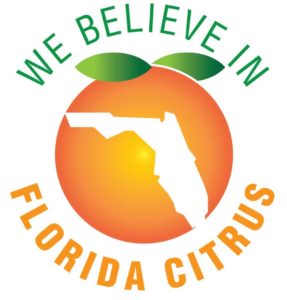The past year was tough for Florida citrus growers, I know. Production was down, and many growers had to dip further into savings or go more into debt to sustain their operations.
Still, I’m optimistic. Here’s why:
Many of the research building blocks necessary for a sustainable Florida citrus industry are in place. Research successes tend to be sequential in nature, meaning that one advancement sets up the next project until something useful is achieved, but we believe we are nearing the point where things will be positioned for industry sustainability and growth.
Our Focus Is Clear
Assuming the pathway we envision is correct, the work remaining has been identified. It is not the kind of exploration that has marked much of the work over the last 12 years, work that was necessary since so little was known about the disease when we started. It is, instead, work that is focused on specific advancements, discoveries, and solutions.
This specific package of work towards sustainability could potentially take 15 years to fully work, but as discouraging as this timeframe might be, it is not as bad as it seems because this package also includes advancements that could potentially increase production by 50% over this period. This is a bold claim, but there are data to support the prediction.
This two-pronged approach — bridge work that carries us to the point of eradicating HLB or making it functionally irrelevant — begins with treatments that will improve production and fruit quality, but the disease will still be prevalent. Ensuing breakthroughs will provide resistant trees that should make HLB irrelevant or perhaps even eradicated. The necessary technologies for these breakthroughs have been built, and the remaining work is to carry them out and get the products into the hands of growers. CRDF will accelerate the work required to see that these projects get into the field as quickly as possible.
Topics on the Radar
There are potential pitfalls that must be acknowledged. First: Necessary regulatory approvals might not be forthcoming. We believe the risk of this is slight, but it exists. Second: The citrus industry as a whole must make a collective decision to accept what is proposed, something that has not yet occurred. Third: It is unclear if the genes that allow HLB to do its damage have been successfully identified. There are reasons to think they have, but scientists performing this work are reticent to so declare without thorough testing. Fourth: Plants have the genes they have because they need them, and if the genes that allow HLB to express itself are silenced, there could be negative effects on the tree, including the possibility of tree failure. So, there could be obstacles, but these obstacles should be able to be overcome.
The approaches to get the industry from where we are to the point of a long-term, permanent solution revolve around the advancement of these eight categories of products, production practices, technologies, or trees:
- peptides
- citrus tristeza virus (CTV)
- tree injection, production practice improvements
- rootstock and scion testing
- transgenics
- CRISPR – gene-editing technology (clustered regularly interspaced short palindromic repeats) and
- other methods of plant breeding
The first categories are designed to work in combinations to reduce disease enough to allow the industry to survive until the more effective longer-term solutions are developed and amplified for widespread commercial use. These longer-term approaches will need continued funding for this period.
Things are going to get better, I’m certain of it. Our job at CRDF is to get you the tools you need in time for it to matter. I’m happy to discuss any of this with you, so don’t hesitate to reach out.










